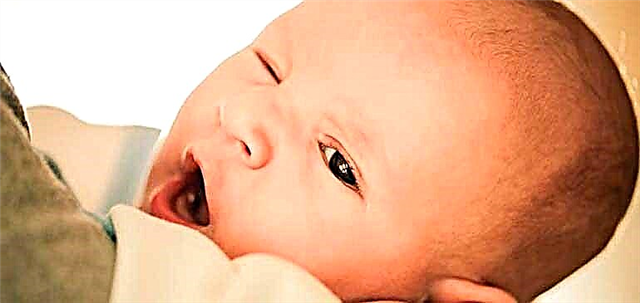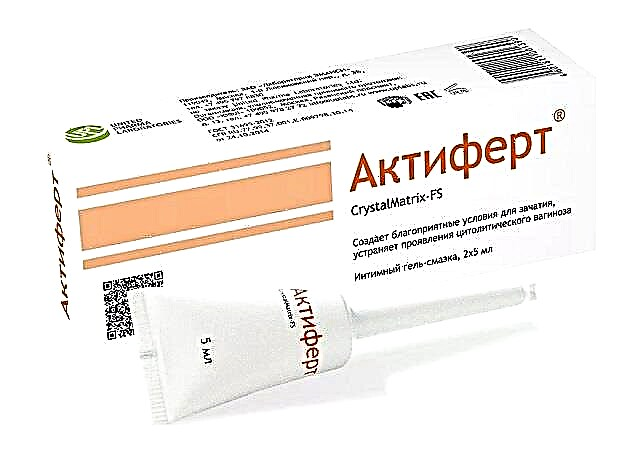
Relanium is called one of the best tranquilizers, because it effectively copes with anxiety, fear and seizures. But is such a strong medicine prescribed for children, in what cases and in what doses?
Release form
The drug is produced only in injectable form - in the form of a colorless or greenish-yellow transparent solution, placed in ampoules of 2 milliliters. One package contains 5, 10 or 50 ampoules. The medication can be administered intravenously or intramuscularly.


Composition
The main component of Relanium, thanks to which the drug has medicinal properties, is represented by diazepam. In 1 ml of solution, it is contained in an amount of 5 mg, that is, one ampoule contains 10 mg of diazepam. In addition to it, the medication contains benzyl alcohol, sterile water, ethyl alcohol, propylene glycol, acetic acid and sodium benzoate. Such substances help the drug to remain liquid and not deteriorate.
Operating principle
Diazepam is able to depress the central nervous system, due to which Relanium is classified as a tranquilizer. The drug affects the structures of the brain, and also enhances the effects of GABA, one of the main mediators involved in the inhibition of nerve impulses.
Relanium has the following effects:
- sedative;
- anticonvulsant;
- hypnotic;
- anxiolytic (the drug eliminates fears and anxiety);
- muscle relaxant (medicine helps to relieve muscle tone).

Indications
Relanium is in demand:
- with neuroses and neurotic disorders, one of the symptoms of which is anxiety;
- to quickly eliminate nervous excitement provoked by anxiety;
- with an epileptic seizure or convulsions that have arisen for another reason;
- with tetanus and other conditions when it is required to eliminate skeletal muscle spasm;
- during diagnostic procedures and operations.

At what age is it prescribed?
Relanium is contraindicated for infants in the first 30 days of life, since in newborns this medication can cause breathing difficulties, arterial hypotension, central nervous system depression and other dangerous conditions. For this reason the medicine is prescribed for children over 1 month old and is used in childhood mainly as an emergency aid.
Contraindications
Relanium is not prescribed for children in such cases:
- if the patient has a hypersensitivity to diazepam or another ingredient in the solution;
- if the child has shock or coma;
- if the patient has severe myasthenia gravis;
- if the child suffers from severe obstructive pulmonary disease;
- if the baby has sleep apnea syndrome;
- if the child has angle-closure glaucoma;
- if intoxication with drugs that can depress the central nervous system is detected, for example, hypnotics;
- if the patient has developed acute respiratory failure.
Small patients with epilepsy, ataxia, brain diseases, hyperkinesis, renal failure, depression or severe liver pathologies require caution when using Relanium.
Side effects
After the Relanium infusion, dizziness, pruritus, hypothermia, drowsiness, constipation, disorientation, muscle weakness, dry mouth, tremor, agranulocytosis, gastralgia, tachycardia, urinary retention and other negative symptoms may appear. Besides, the use of such a medication can be addictive and addictive, and because of the abrupt discontinuation of admission, a withdrawal syndrome is possible.
Instructions for use
Relanium is administered intravenously to children, and the injection should be performed slowly (1 ml per minute). The dose of the drug depends on the age of the baby:
- If the patient is not yet 5 years old, then a single dosage of diazepam for him will be 100-300 mcg for each kilogram of his weight. In this amount, the medication is injected every 2-5 minutes, but the child should receive no more than 5 mg. If necessary, repeat the injection after 2-4 hours.
- If the child is over 5 years old, then a single dose for such a patient is 1 mg, and the maximum is 10 mg. All other conditions are the same as for younger children.


Overdose
As a result of exceeding the dose of Relanium, consciousness is suppressed, reflexes decrease, tremors occur, blood pressure and heart rate decrease, vision is impaired or other dangerous symptoms appear. To eliminate them, they resort to gastric lavage, forced diuresis, intake of sorbents and symptomatic agents (vasoconstrictor, cardiac drugs, glucose with insulin, etc.).

Drug interactions
Relanium is not advised to be combined with many other drugs, among which are called muscle relaxants, sedatives, MAO inhibitors, some antibiotics, cardiac glycosides and sleeping pills. A complete list of all these drugs can be found in the instructions attached to the ampoules.
Terms of sale and storage
The drug is sold exclusively by prescription, since Relanium is included in the list of powerful drugs that are controlled by the Ministry of Health. Store the ampoules at a temperature of + 15 + 25 degrees in a place hidden from sunlight and children. The shelf life of such a product is 5 years.
Reviews
They speak about Relanium mostly well, calling it an efficient and effective remedy. The medication quickly eliminates nervous excitement, convulsions, anxiety or increased muscle tone. The disadvantages of injections include the frequent occurrence of side effects and addiction.


Analogs
Another medicine with the same active ingredient (Sibazon, Seduxen, Relium) or with a similar effect (Phenibut, Afobazol, Tenoten, Noofen, Atarax, Adaptol, Grandaxin and others) can replace Relanium. These medicines are available in different forms - in coated tablets, ampoules, capsules, and lozenges. In addition, they have different active ingredients, age restrictions and contraindications, therefore the doctor should choose an analogue of Relanium.


For information on how to use Relanium, see the next video.



